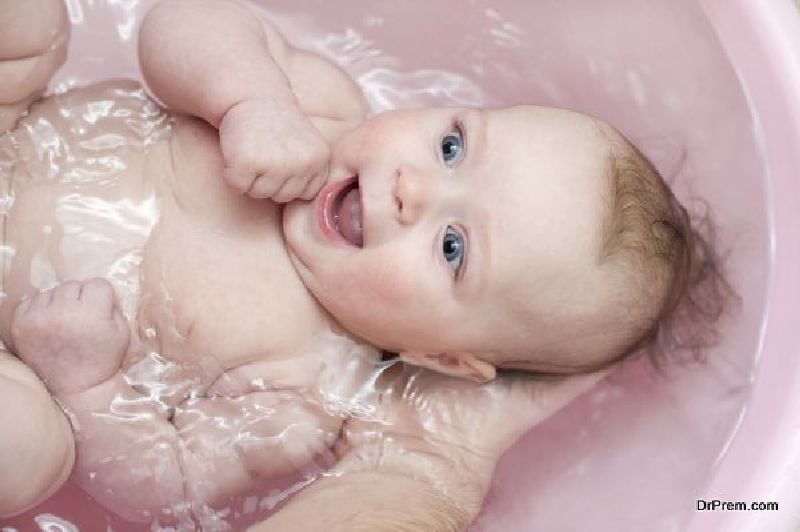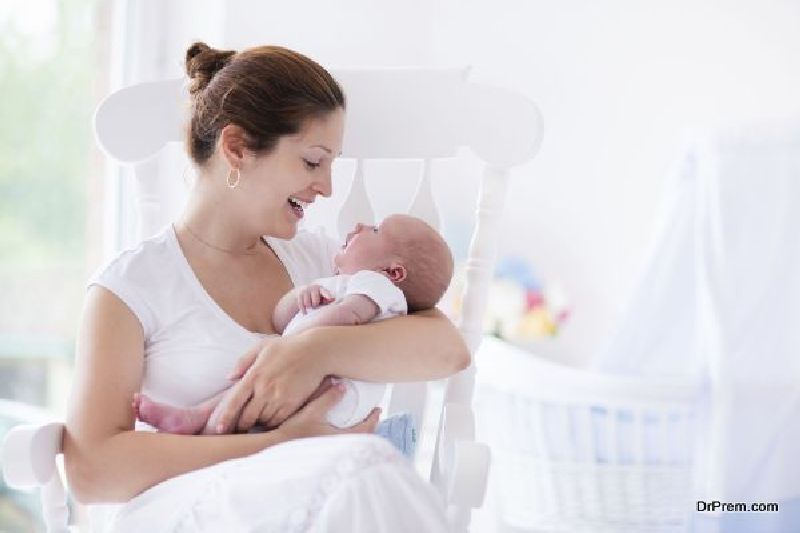Bringing home your newborn is both exciting and nerve wracking, especially for new parents. You want to ensure you do everything right to keep your baby happy, healthy, and safe. There are some pretty basic health precautions you can take to help your infant’s transition from hospital to home a smooth one.
Sleeping

It’s highly recommended that your infant is put to sleep on his/her back regardless of where they’re sleeping. Ensure that the surface is flat and firm, such as the mattress found in a crib or bassinet.
Having your infant sleep in their own, designated space is important not only for their development but for their health and safety. When a small child sleeps in bed with adults, there’s always the risk of suffocation or unintentional smothering.
Practicing safe sleeping habits for your infant can prevent and protect your child from SIDS.
Household Accidents
Accidents happen. They’re part of life. But when it comes to your infant’s safety, there are several precautions that can help prevent some common infant accidents.
If your child is mobile, be sure to check the floor for any small items or materials that could act as potential choking hazards. Are there low hanging lamp cords or table cloths? Be sure nothing is in reach of your infant. They can accidently pull on items that could fall, causing injury to their head or worse.
The same holds true for your furniture. Be sure that all furniture is secured to the wall using anchors. Also, don’t place loose items like televisions on top of furniture without securing it with straps. A child can accidently shift a piece of furniture, causing something to jostle loose and fall on top of them. Your infant may also accidently pull open a dresser drawer on top of themselves. Check all furniture in a room before allowing your child access to it.
Other accidents can actually happen in the hospital, before you ever get to bring your child hope. These are known as birth injuries and are often caused by individuals other than yourself. Knowledge of these types of injuries can help protect you and your child during your hospital stay.
Bath Time
 Bath Time is usually a family affair when it comes to infants. It’s the opportunity to take photographs, make your baby giggle and watch them splash about in the water. But it can also be a dangerous time if you don’t take the necessary precautions.
Bath Time is usually a family affair when it comes to infants. It’s the opportunity to take photographs, make your baby giggle and watch them splash about in the water. But it can also be a dangerous time if you don’t take the necessary precautions.
The first thing you’ll want to check during bath time is the water temperature. Test the water by sticking your elbow or hand into the tub before placing your child down. Remember, a baby’s skin is much more sensitive than an adult’s. A lukewarm bath is sufficient. To avoid running a bath that is too warm, set your water heater to approximately 115 degrees. This will help prevent accidental burns.
Never leave your baby unattended in the bath. This rule holds true whenever discussing an infant or child near water of any kind. Even if you’re bathing your baby in the kitchen sink. It only takes two inches of water for a child to drown and only a second for a fatal accident to occur.
Car Safety
Most babies love car rides. They can be soothing and relaxing for infants. But there are also some important safety features to consider when traveling with your infant.
It’s suggested you never used a pre-owned or used car seat for your baby. Even if the car seat is donated by a friend of family member, you don’t know if it’s been involved in any kind of accident or has experienced a defect. Purchase a car seat that is federally approved.
Car seat installation is another thing that most parents are not properly trained in. And as we know, those car seats can be pretty tricky! To ensure your infant’s car seat is properly installed, contact your local police or fire department. Most cities have individual’s specifically trained in car seat installation.
You’ll also need to follow the guidelines for when your child can move from a rear facing car seat to forward facing and from a harness strap to a booster. These guidelines are based on a child’s age and weight. These laws are put in place to ensure that your child is seated and secured in such a way to protect them from injury in the event of an accident.
One of the most important rules when it comes to childhood safety in vehicles is that your child is using a car seat. If they are under the age of eight and require some type of car seat or booster, you must never remove your child from these safety seats or allow them to ride on your lap.
One of the last things to keep in mind when transporting your baby from one place to another is an accident many parents make without realizing – leaving your infant in the car. If you’re not used to having a baby in the backseat, it’s unbelievably common for parents to completely forget their child is there. Leaving an infant in a car can be a fatal mistake, especially in extreme temperatures.
To prevent this from happening, place your purse, laptop or another important item in the backseat. This way, you’re almost guaranteed to open the rear car door before exiting. Keeping your car locked in the driveway can also prevent children playing outdoors from becoming trapped inside accidentally.
Feeding

The most common thing that comes to mind when discussing infant safety and eating is choking. If you’re introducing your baby to solid foods, you’ll want to take certain steps to help prevent accidental choking.
This means limiting hard foods and ones that are not easy for your child to chew and digest. These include many raw fruits and vegetables. When feeding your baby any type of solid food, be sure the pieces are extremely small. Also, introduce only one new food to your baby at a time. This will help you to determine and pinpoint any food allergies should they present themselves.
It’s recommended never to prop your baby up with a bottle or leave them unattended. This means not placing your child in their crib while still finishing a bottle. Not only could they choke, but it can also cause tooth decay if your baby is cutting teeth.
If your child is fed in a highchair, ensure that you use the proper restraints every time. The straps and buckles are there to keep your child securely in place. Even a short fall from the highchair to the ground can cause your infant serious injury.
Be Aware of Your Surroundings
Most accidents are preventable, especially when discussing infants and children. By taking the time to check your surroundings, do a little research, and create a safe environment for your infant, you can help ensure they remain happy and healthy.
Article Submitted By Community Writer




